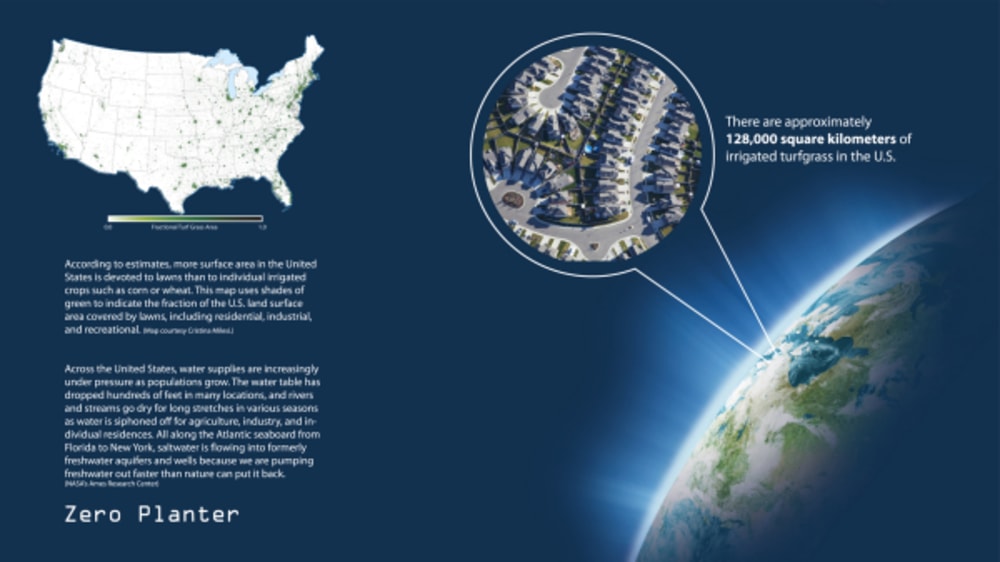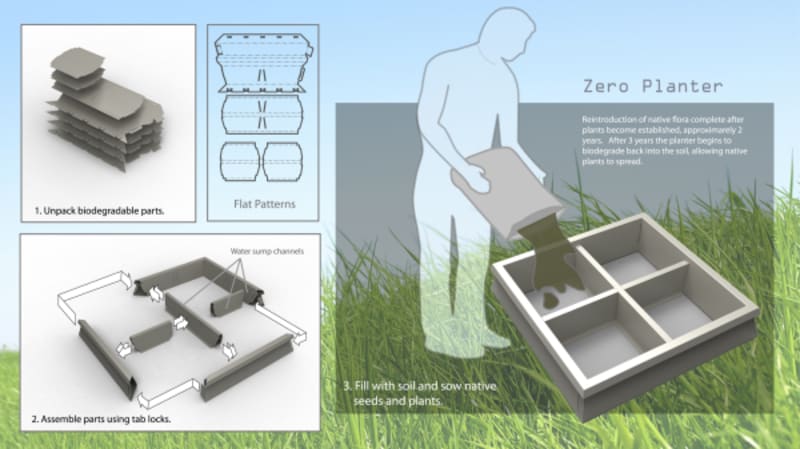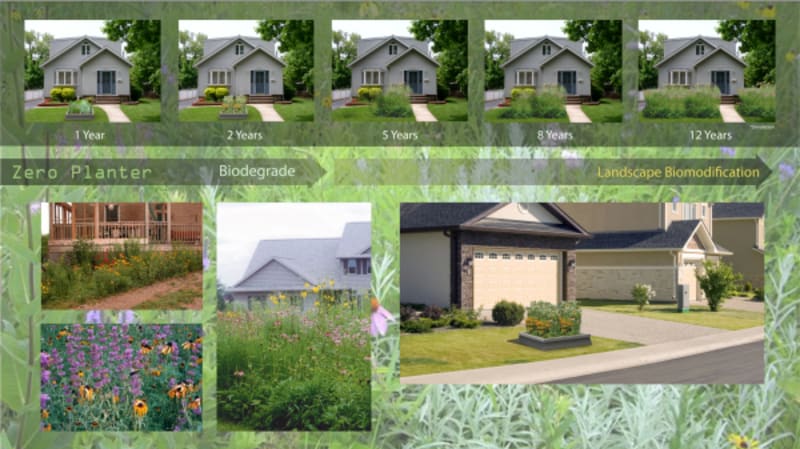I think it was Bob Dylan who once said " If you want to be truly subversive, you can't tell anyone." It is that premise that inspired this method to transform the suburban American landscape. For many years, the look of the suburban landscape has been dominated by large turf grass lawns leading up to a home. This look is derived from English manor homes of the 1800's. The look, although unnatural, is accepted as being the standard in most parts of the country. To change this perception and improve our local environment is the goal of this concept.
A turf grass lawn has many drawbacks such as the need for watering, fertilizer, and herbicides in order to survive and thrive. Despite big differences in climate and soil conditions across the United States, most of the grasses used in U.S. lawns aren’t native to the area where they are being grown.* Lawns, including residential and commercial lawns, golf courses, etc., could be considered the single largest irrigated crop in America in terms of surface area, covering about 128,000 square kilometers. A well-watered and fertilized lawn is also carbon sink and in the U.S., lawns could store up to 16.7 teragrams of carbon each year. That’s equivalent to about 37 billion pounds.* A native tall grass lawn has the potential to sequester exponentially more carbon in its deep rooted system.
Native plants have adapted to the local environment and will thrive in their natural setting which results in a self-sustaining, low-maintenance landscape. They also provide a habitat for wildlife, reduce soil erosion and absorb more water and nutrients than turf grass, reducing run-off, flooding, and pollution. Native plants are naturally drought tolerant, disease and pest resistant, and require less maintenance than turf grass.
The solution is to reintroduce native plants into lawns in a manner acceptable to homeowners, and given time, change the perception of what a lawn should be. This concept is a simple 4'x4' planter made of biodegradable plastic, which would be sold with plant seeds specific to the region that it is being installed. For example, in regions of the Midwest, the planter could be sold with flax, oats, wild rye, coneflower, black-eyed susan, and tall grasses. A different combination of plants would be used in other regions.
Over the course of several years the planter would biodegrade into more mulch, further spreading the plants. The true function of the product at this point becomes to change peoples' perceptions to how their neighborhood should look, by introducing a wild and natural element back into the suburban landscape. As people become accustomed to seeing the small and seemingly controlled areas of native plants, they will become more accepting of the larger expanses and the accompanying benefits.
The planter would be manufactured by cutting biodegradable plastic sheet. The planter is packaged flat to save the on cost of shipping. Assembly, site and soil selection is done by the homeowner, regional seed selections would be provided with the planter.
Like this entry?
-
About the Entrant
- Name:Kevin Short
- Type of entry:individual
- Software used for this entry:Solidworks/Illustrator/Photoshop
- Patent status:none








